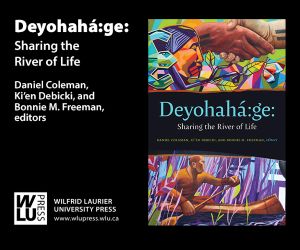“All the ills of democracy can be cured by more democracy,” said Al Smith, cigar-chomping governor of New York. But Smith liked people. Every politician loves democracy. It’s just people that some of them can’t stand.
In 1988 Conservative MP Patrick Boyer (Etobicoke-Lakeshore, Ont.) introduced Bill C-311 the Canada Referendum & Plebiscite Act that proposed a legal framework for referenda. It was “awkward,” Boyer writes in Forcing Choice. “A number of MPs told me referendums were a bad idea because members of the public are too ignorant to vote intelligently on complex issues, so it would be a danger for public affairs to start down this ill-conceived path.”
Boyer’s bill lapsed in the Commons though he reintroduced it six times. “Not every issue should be litigated in court or made the subject of a royal commission,” writes Boyer. “Not every person suited to a task needs appointment to a public body or a consultant’s contract.”
Forcing Choice is a passionate defence of referenda. Few Canadians under 40 have ever voted in one. Parliament has sanctioned only two peacetime referenda in the past 150 years, on prohibition (in 1898) and Québec’s distinctiveness (in 1992). Yet referenda still get a bad name on Parliament Hill, writes Boyer.
“Fear of mob rule seems a stretch in Canada nowadays, although opponents of citizens voting on important issues continue to invoke this scare tactic,” says Boyer. “When Parliament was debating a 1973 motion to hold a referendum on capital punishment, New Democrat MP Ed Nelson said the death penalty ‘must be decided from a logical and philosophical point of view, rather than from emotional motivation.’ Then he asserted, with more emotion than logic, ‘This type of referendum is little more than invitation to mob rule.’”
Forcing Choice is meticulously researched. Boyer traces the roots of referenda to the farm protest movements of a century ago. All three Prairie legislatures passed “direct democracy” bills, in Saskatchewan in 1912, Alberta in 1913 and Manitoba in 1916. One by one the laws were struck down by the courts or strangled by opponents.
“If, as critics of ballot questions contend, people aren’t able to understand complex issues in a referendum, how do we possibly manage when faced with a general election?” writes Boyer. He condemns a “precocious sense of social superiority” shared by legislators who like public affairs, but just don’t like people.
Boyer is an honest correspondent. He notes referenda can be messy and unpleasant, like a local July 16, 2017 vote that rejected a zoning application to open a Muslim cemetery in the Québec municipality of Saint-Apollinaire. The results were 19 no, 16 yes, with one ballot spoiled, “an unresolved case of religious discrimination,” he writes. Readers are left to wonder why local Muslims could not persuade ratepayers that they so loved Québec, they wanted to spend all eternity in a graveyard at Saint-Apollinaire.
By Holly Doan
Forcing Choice: The Risky Reward of Referendums, by J. Patrick Boyer; Dundurn Press; 384 pages; ISBN 9781-4597-39123; $24.99








